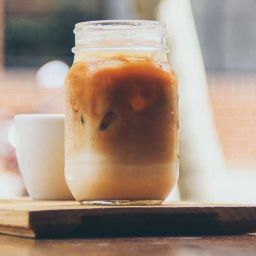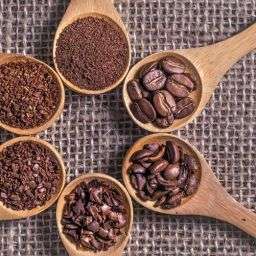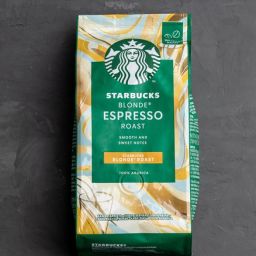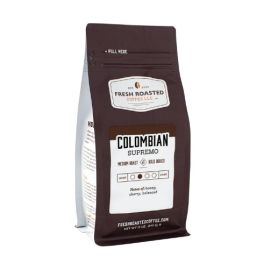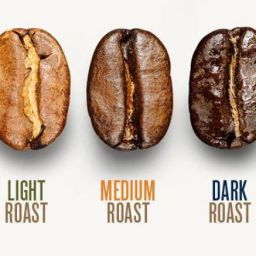
Pour over coffee stands out for its ability to highlight the nuanced flavors of coffee, offering a clean and refined taste that coffee enthusiasts adore. Despite its simplicity, brewing pour over coffee can seem daunting, especially when precision is key.
A common hurdle for many is not having a scale to measure the coffee and water ratio accurately. However, this doesn’t mean you can’t enjoy a delicious cup of pour over coffee. With some guidance and a few handy tips, you can master the art of pour over coffee, scale-free.
Key Takeaways
- Importance of Using Fresh, Filtered Water: The foundation of a great cup of pour over coffee starts with fresh, filtered water. The purity of the water can significantly affect the taste, highlighting the coffee’s flavor profile without adding any unwanted flavors.
- The General Rule of Thumb: A good starting point is using 1 to 2 tablespoons of coffee for every 7 ounces of water. This ratio is flexible, allowing you to adjust according to your taste preferences. If you prefer a stronger brew, lean towards 2 tablespoons; for a lighter cup, 1 tablespoon might be enough.
- Pre-Heating Your Equipment: Before you start, pre-heat your dripper and filter with hot water. This step is crucial for maintaining the brewing temperature and minimizing any paper taste from the filter, ensuring a pure coffee flavor.
- The Significance of Grind Size: The grind size matters a lot in pour over coffee. A medium-fine grind is ideal, as it allows optimal extraction without over-extracting, which can lead to bitterness. The grind should resemble table salt in texture.
- Utilizing a Gooseneck Kettle: For precision and control over the pouring rate and water distribution, a gooseneck kettle is recommended. However, if you don’t have one, any kettle will do—just pour with care to ensure even saturation of the coffee grounds.
- Blooming: The Flavor Enhancer: Blooming is a simple yet crucial step where you pour a little hot water over the grounds to wet them. This process allows the coffee to release gases, leading to a fuller extraction of flavors. After the bloom, continue with your pour, aiming for even saturation.
- Adjusting to Taste: The beauty of pour over coffee lies in its adaptability. Feel free to adjust the coffee-to-water ratio and brewing time based on your taste preferences. Observing the taste and experimenting with slight adjustments can lead to your perfect cup of coffee.
Step-by-Step Guide to Brewing Pour Over Coffee Without a Scale
Brewing pour over coffee without a scale is more about intuition and less about precision. This guide will walk you through each step, focusing on what truly matters for making a delicious cup. Let’s dive in!
1. Boil Your Water
Start by boiling fresh, filtered water. If you’re aiming for precision without a scale, a general rule is to use about 7 ounces of water for each tablespoon of coffee. Since temperatures between 195°F and 205°F are ideal for brewing, if you don’t have a thermometer, let the water stand for 30 seconds off the boil to cool slightly.
2. Measure Your Coffee
The magic ratio for a robust pour over is roughly 1 to 2 tablespoons of coffee per 7 ounces of water. Use a standard tablespoon for measuring your coffee beans before grinding them to a medium-fine consistency. If it’s pre-ground coffee you’re using, that’s okay too, just stick to the ratio.
3. Prep Your Filter and Dripper
Whether you’re using a metal or paper filter, ensure it fits snugly in your dripper. If it’s a paper filter, give it a quick rinse with hot water to get rid of any paper taste. This also helps to preheat your coffee mug or carafe, which you should then empty before brewing.
4. Bloom Your Coffee
Place your ground coffee in the filter. Begin your pour with just enough water to saturate the grounds, starting what’s called the “bloom” process. This initial wetting should last about 30 seconds to allow the coffee to expand and release trapped gases, enhancing the flavor.
5. The Pour Over Process
After the bloom, continue pouring the hot water in a slow, steady spiral, starting from the center and moving outward, then back toward the center. The pour should be controlled and evenly paced, taking about 3 to 4 minutes in total. This method ensures even extraction, which is key to a great tasting pour over coffee.
6. Enjoy Your Coffee
Once you’ve reached your desired amount of water, let the coffee finish dripping through the filter, then remove your brewing setup. What you’re left with is a fresh, aromatic cup of pour over coffee, ready to be enjoyed.
Tips for Success
- Grind Size Matters: A medium-fine grind is akin to sand. Too coarse, and your coffee will be weak; too fine, and it might taste bitter.
- Water Quality is Key: Fresh, filtered water will always yield the best results.
- Experiment and Adjust: The beauty of pour over coffee is finding your perfect cup through experimentation. Play around with the amount of coffee, the grind size, and the pouring technique until you find what works best for you.
Troubleshooting Common Pour Over Problems
Encountering issues with your pour over coffee? Here’s how to tackle the most common problems:
- Weak, Watery Coffee: This often results from using too little coffee or too coarse a grind. Try increasing the amount of coffee or using a finer grind to ensure richer extraction.
- Too Strong or Bitter Coffee: If your coffee tastes overbearing or bitter, it might be due to using too much coffee or grinding it too fine. Use less coffee or coarsen the grind for a smoother taste.
- Issues with Brewing Time: A brew that’s too fast can lead to under-extraction, making your coffee taste weak. A slow brew might over-extract, causing bitterness. Adjust your grind size—finer for slower brews, coarser for faster ones.
Perfecting Your Pour Over Coffee Technique Without a Scale
The key to perfecting pour over coffee lies in practice and adjustment:
- Consistent Practice: Regular brewing helps you get familiar with the process and understand how different factors affect the taste.
- Adjusting the Coffee-to-Water Ratio: Start with the standard ratio and adjust based on your taste preferences. Whether you prefer your coffee strong or mild, tweaking the amount of coffee will help you find your perfect brew.
- Experimenting with Grind Sizes and Water Temperature: Different grind sizes can dramatically change your coffee’s flavor profile. Experiment with finer or coarser grinds to find what works best. Similarly, slight adjustments in water temperature can enhance different flavor notes in your coffee.
The Art of Observation and Adjustment
Mastering pour over coffee is as much about honing your senses as it is about technique. If your coffee tastes too bitter, it might be over-extracted, suggesting a need for coarser grinds or shorter brewing time. Conversely, a sour taste can indicate under-extraction, calling for finer grinds or longer brewing. Pay attention to roast levels; lighter roasts can be more acidic, while darker roasts are bolder and less acidic.
Quality ingredients are non-negotiable—fresh, high-quality beans and clean, filtered water make all the difference. Learning to adjust based on taste will elevate your coffee experience.
FAQs
How to Measure Coffee Without a Scoop: You can use a standard tablespoon as a guide—one tablespoon of coffee for every 6 ounces of water is a good starting point.
Number of Tablespoons of Ground Coffee for Pour Over: Generally, use 1 to 2 tablespoons of coffee per 7 ounces of water. Adjust according to how strong you like your coffee.
Adjusting Coffee Strength Without a Scale: Experiment with the amount of coffee and water. Start with the recommended ratio and adjust based on your preference for stronger or weaker coffee. Observing the brew time and the coffee’s taste will help you find the perfect balance.
Final Thoughts
Brewing pour over coffee without a scale is an art that encourages mindfulness and patience. It’s about enjoying the process, from selecting your beans to taking that first sip. Remember, practice makes perfect. Each cup is an opportunity to refine your technique and deepen your appreciation for coffee. Keep experimenting with ratios, grind sizes, and brewing times to discover your ideal cup.




